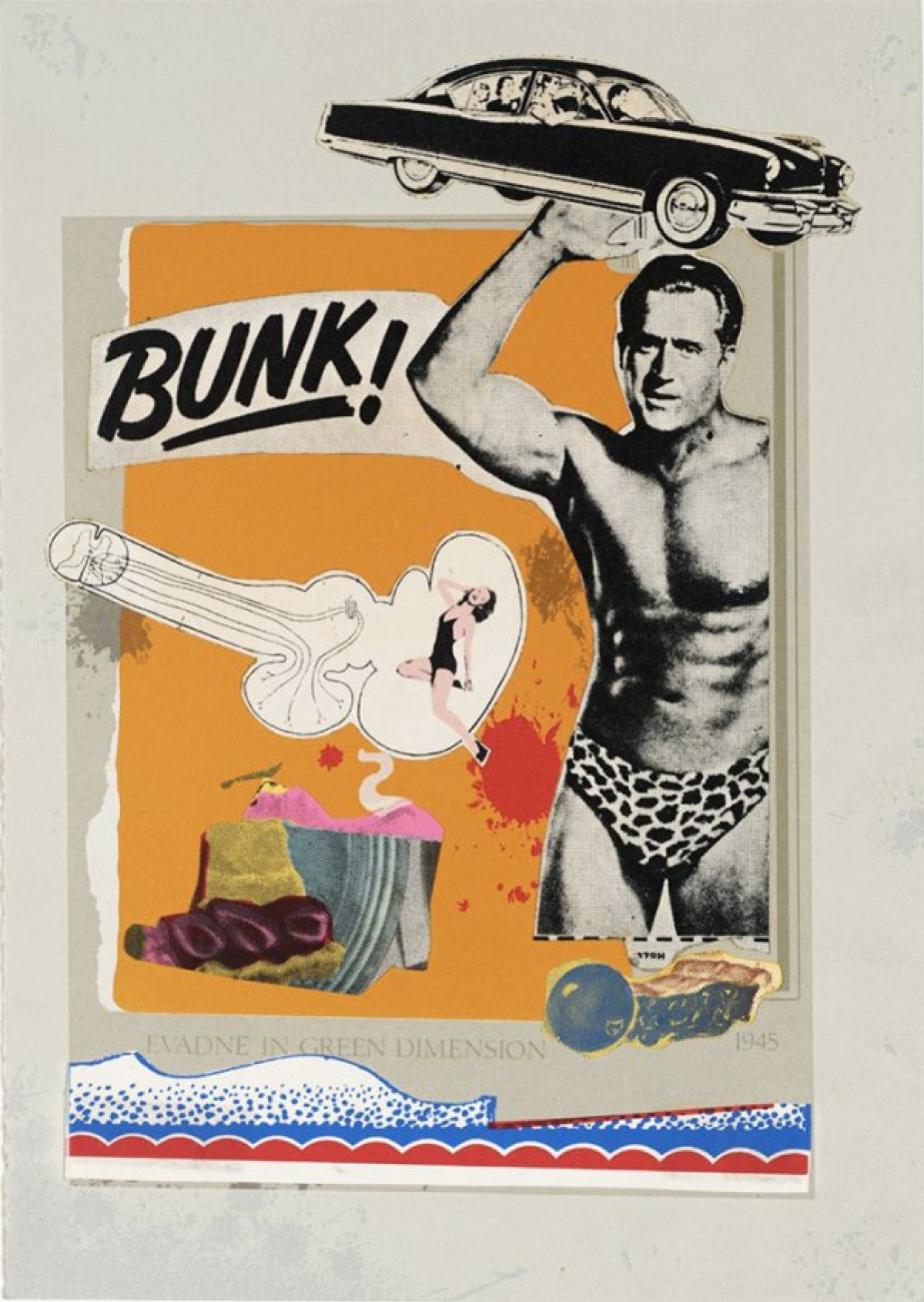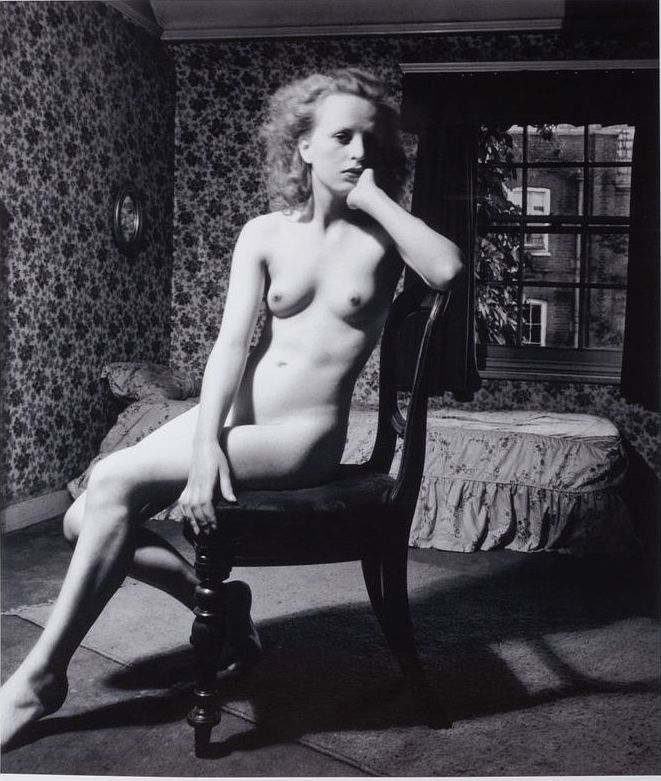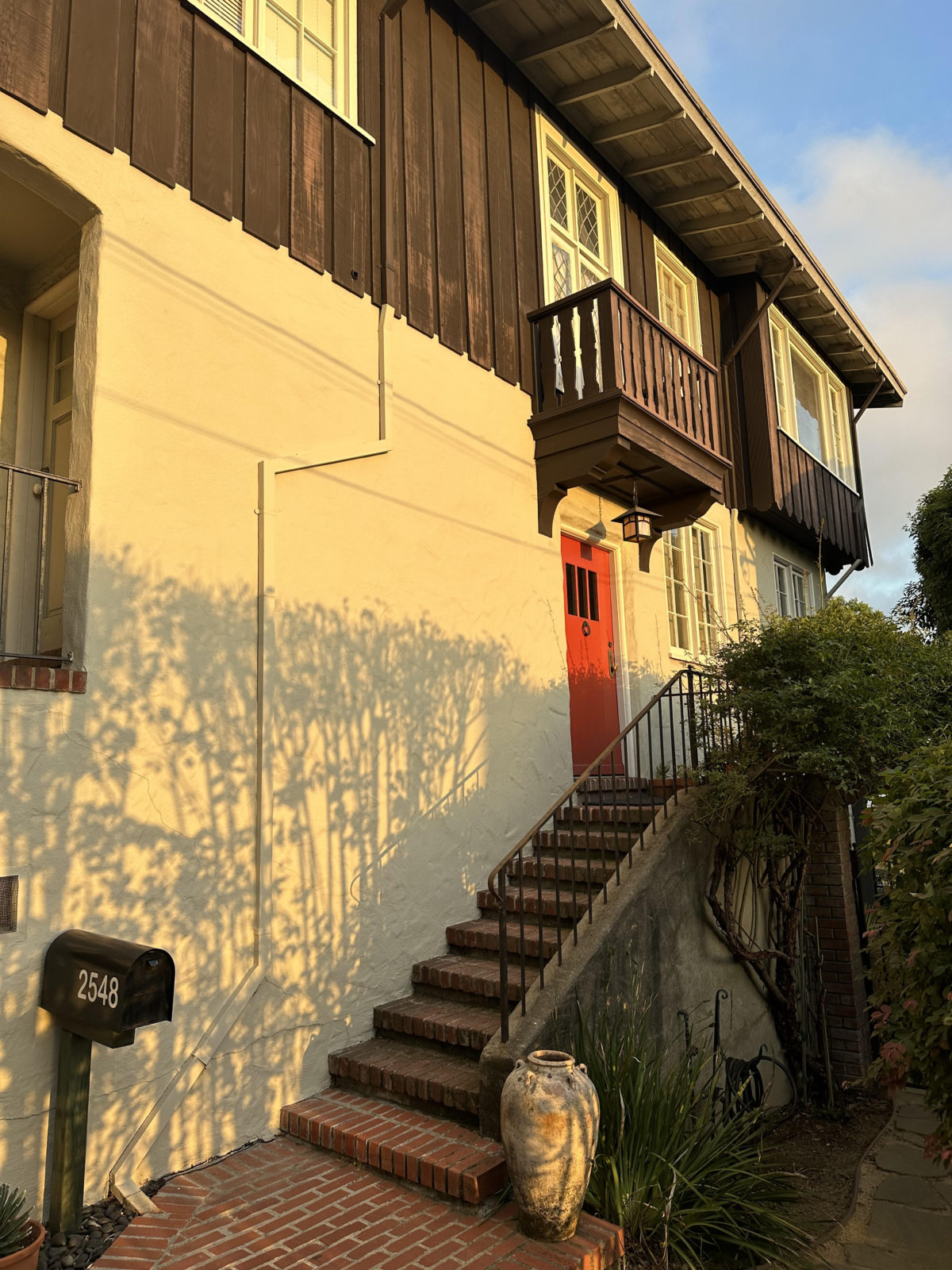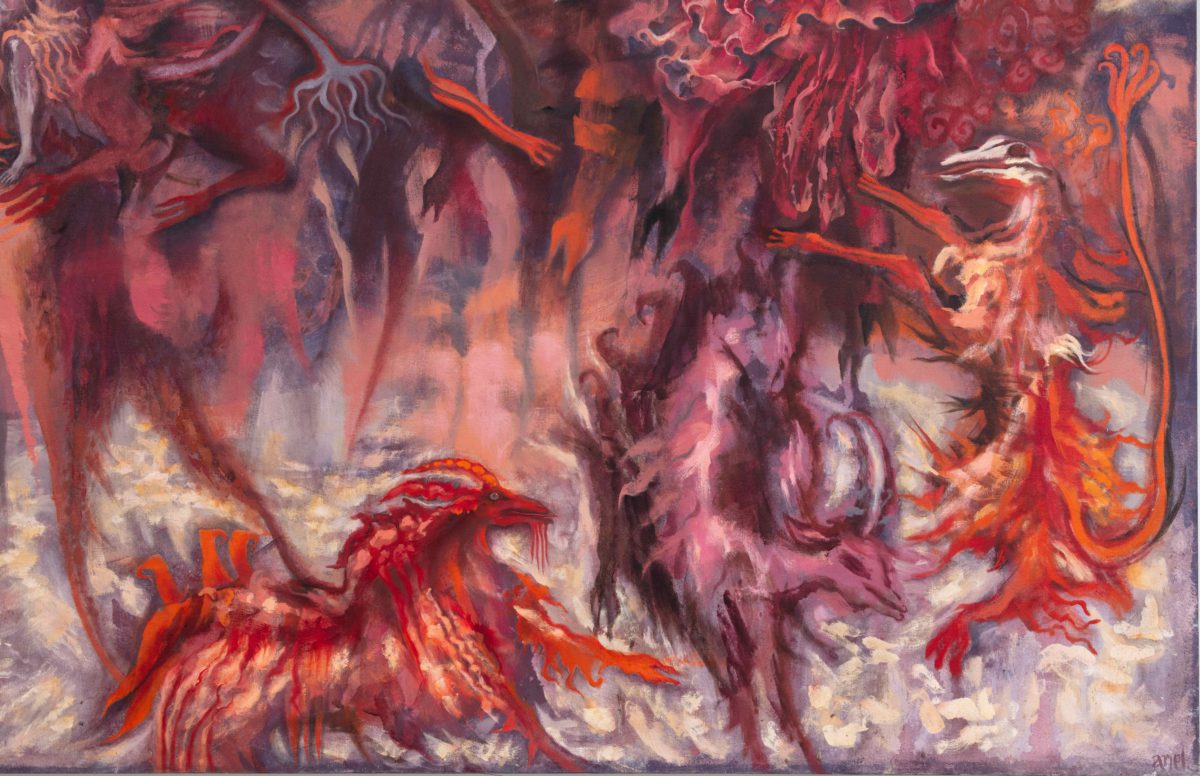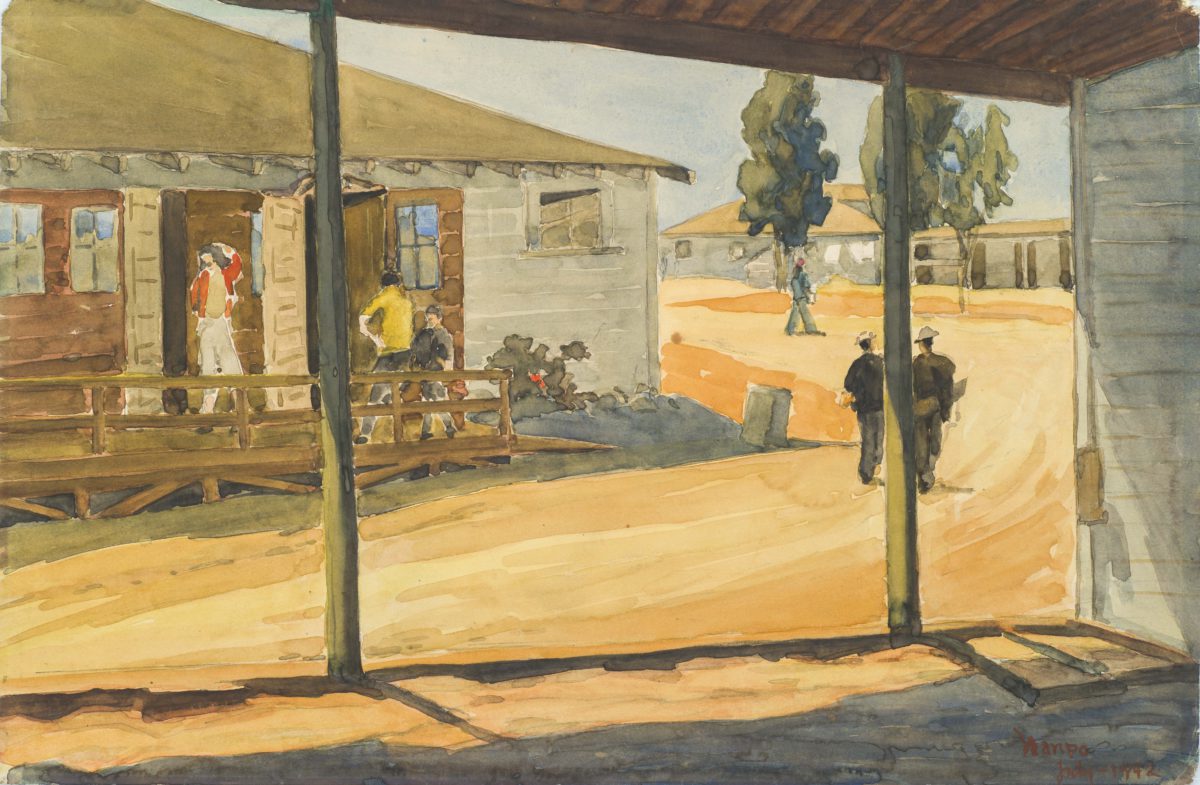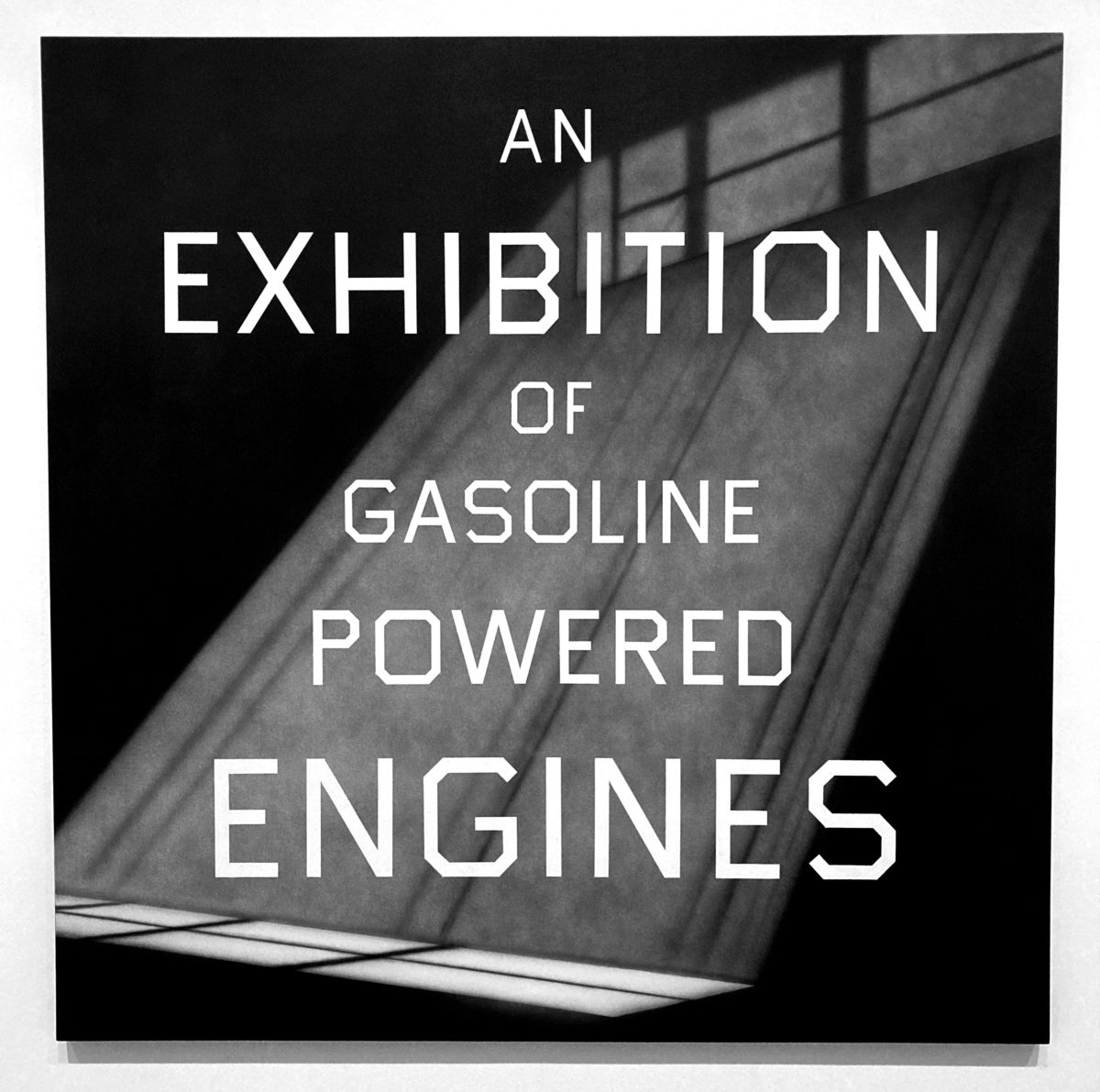Postwar Modern: New Art in Britain 1945-1965 at the Barbican
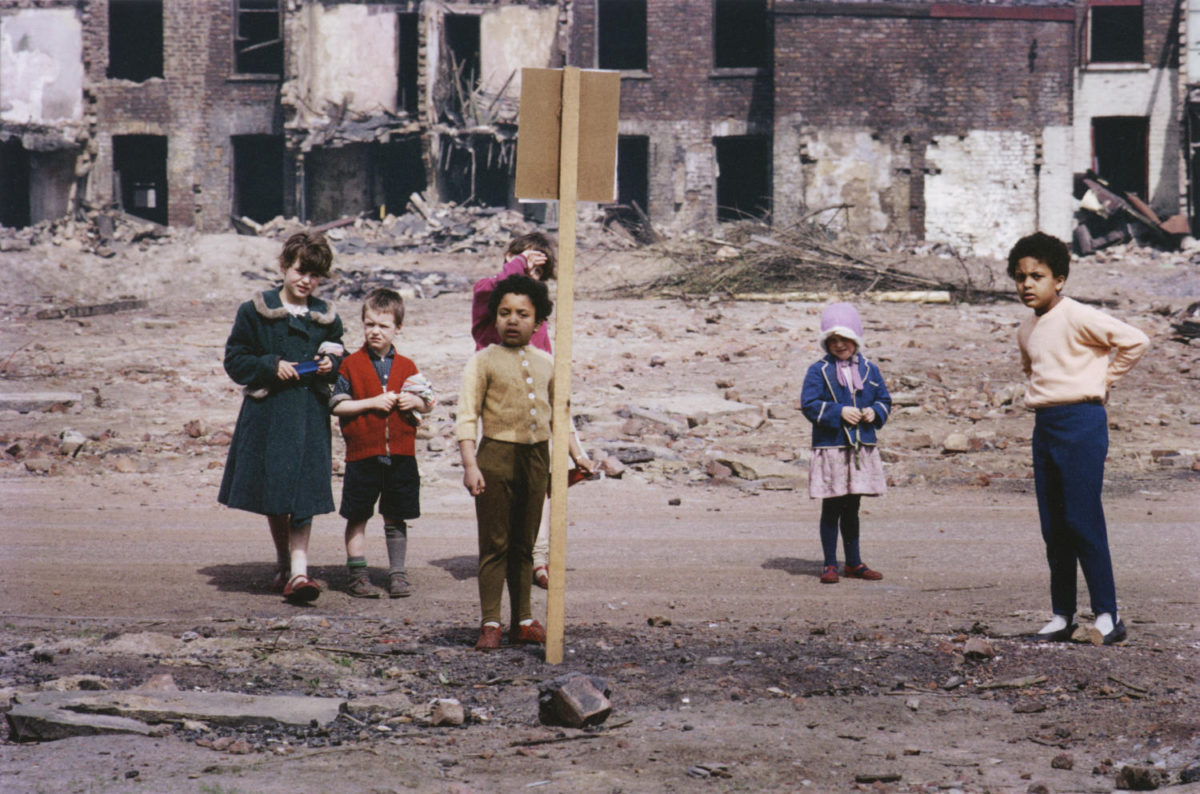
It’s April 1945. Hitler is dead in Berlin, his blood still warm in his body, and an American woman is posing for a photo in his bathtub in Munich. Her name is Lee Miller. She’s bathing. A picture of the Führer, propped on the bath rim, observes her naked body. On the basin to her left there’s a statuette, maybe of Venus. It’s quiet, but the whole scene feels like gossip.
So begins the postwar period. Or, so it began in Postwar Modern: New Art in Britain 1945-1965, which ran from March to June, 2022, at the Barbican Centre in London. The photo of Miller, taken by David Scherman, was the opening piece, and it might have shocked anyone who takes their shoes off inside: Miller wore her dirty boots all the way to the tub and wiped them on the Führer’s mat.
I’d never imagined Hitler taking a bath, but it must be true: even mass murderers sweat. It’s possible Jesus perspired, too, but that’s not something I could see in Francis Newton Souza’s rendering of the Crucifixion in the next room. In “The Agony of Christ,” which Souza painted in 1958, Jesus is Black, figurative, and not very happy: He’s got blood in his eyes and seems to be the cross. The wall text wondered if this Savior was Souza:
This agonized, confrontational Jesus seems to embody what cultural theorist Stuart Hall observed was common to artists who came to Britain having lived under colonial rule: the desire to ‘look [Britain] in the eye, and, if possible, conquer it.’
Souza was born in Portuguese Goa and worked in British Bombay before moving to London in 1949. His life and work show that “postwar,” in Britain, is also postimperial: Look Black Jesus in the eye and you might see the end of the British Empire. That “end” was, of course, only the beginning of something new, as in Eva Frankfurther’s painting “West Indian Waitresses” (1955), where Caribbean migrants are ladling out food in a Piccadilly cafeteria.
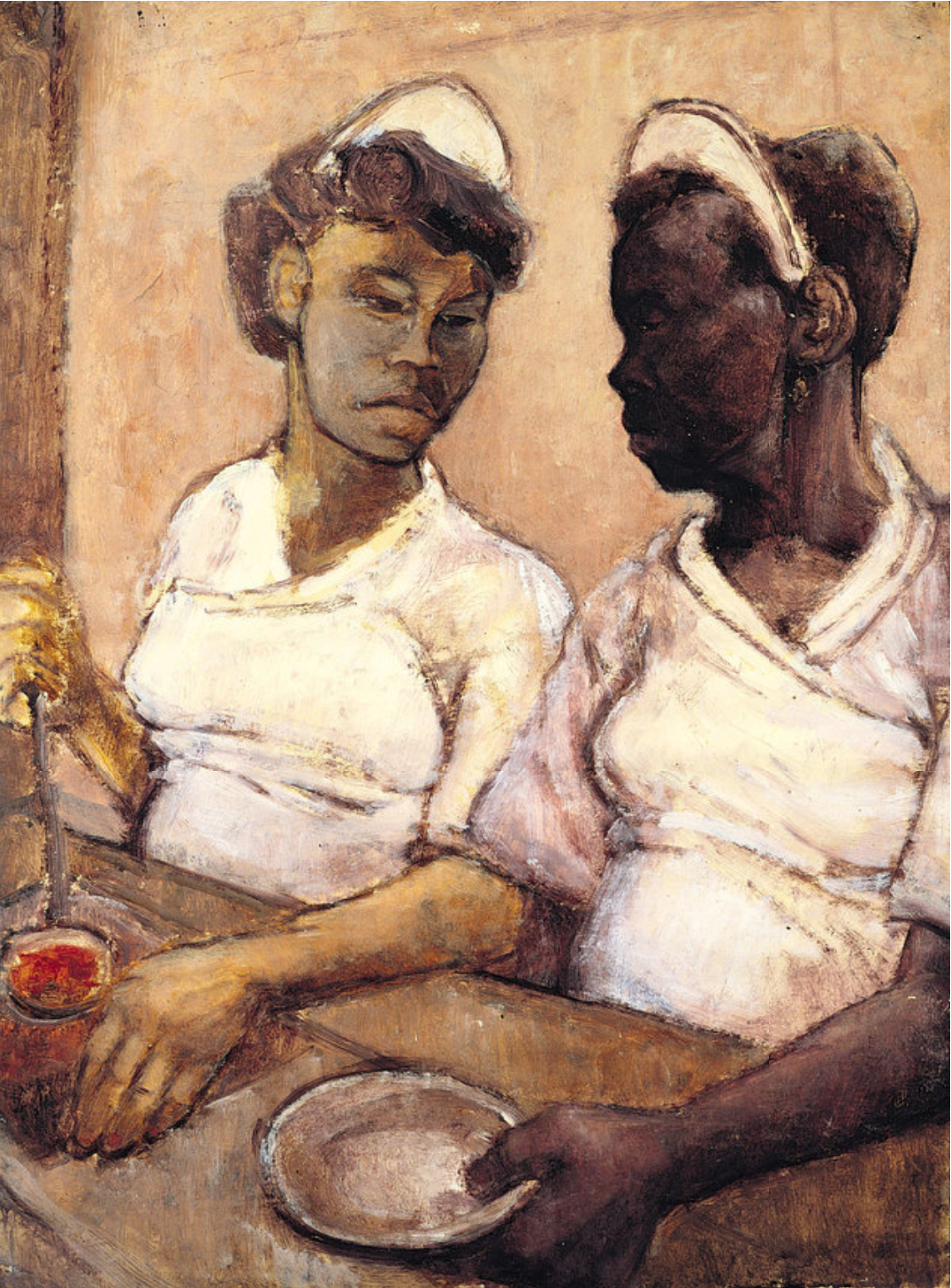
Beate Planskoy, 2015, © The Estate of Eva
Frankfurther, photograph by Justin Piperger,
courtesy Barbican Centre
Newness, in feeling more than form, was central to this show. Photos by Bert Hardy captured new ways of having fun, as in, Let’s hang out on the bomb site. In “Betty Burden plays with a young boy on a bomb site in Birmingham,” Betty, a teenager, helps a boy move his bike up a smashed urban slope. In the background there are houses and ruins, and the photo seems to memorialize a moment before bliss: in a few seconds, the boy will rush into the ruins below.
In a show so indebted to war, it was hard not to think about Ukraine, but gloppy paintings by John Bratby made it easier. His 1954 still life of a table heaving with food, painted the same year rationing ended in Britain, felt like an exercise in excess. Also, he beat his wife, the painter Jean Cooke, and to illustrate her abuse the curators, in a sublime act of revisionist retribution, put her “Mad Self Portrait” (1954) opposite his paintings. In it, Cooke has a healthy black eye.
There’s no such thing as postwar. War is the mother of the modern state, and even when she buggers off, maybe to take a bath or ride a bike, she’s always around, haunting the present like an after-hours ghost.
“War,” said Randolph Bourne, “is the health of the state.” It is also the patron of modern art. Dada does not exist without the First World War. Surrealism does not exist without Dada. And the art in Postwar Modern, from the detached lovers in Lucian Freud’s autobiographical “Hotel Bedroom” (1954) to the roiling abstraction of Magda Cordell’s “Figure 59” (1958), sucks every teat of the war machine. For Freud and Cordell, this machine made ruins, and it’s the experience of living, and loving, in ruins—psychological ruins; physical ruins—that feeds the figures in their work. The most striking pieces in the show turned these ruins into something human.
That is, if you can call Eduardo Paolozzi’s bronze sculptures human. Arranged in a room aptly named “Strange Universe” (a term borrowed from Franciszka Themerson), these gaunt, armless entities—“St. Sebastian III” (1958), “The Philosopher” (1957), and “St. Sebastian IV” (1957)—looked like the love childs of golems and robots, their bodies seemingly carved from ancient rocks of spinning wheels, looms, clocks, bent forks, toys, the keys of a piano, and the innards of engines, among other mechanical gubbins.
There’s no such thing as postwar. War is the mother of the modern state, and even when she buggers off, maybe to take a bath or ride a bike, she’s always around, haunting the present like an after-hours ghost. That’s what I saw in Paolozzi’s bronze beings (“gods,” he called them). At first glance, each body was an assemblage of broken objects that he collected from bomb sites in London. “But this detritus,” writes Ben Highmore,
was physically lost in the process of fabrication. Fabricated by the lost-wax method (an ancient technique of bronze casting where the wax mold is destroyed in the act of casting), the sculptures articulate the details of the gleaned items in their absence. The figures were made by producing wax sheets that bore the imprint of bomb-site junk.
All that remained of the bent forks and machine parts – the bodies of these bombsite beings – were the impressions, or copies, of their ruin. The “ghosts,” said Paolozzi, “of forms.” That’s the modern body, too: an impression of something old, found, and maybe human.
Unless, of course, you were a woman in Bill Brandt’s photos. Then the modern (female) body was naked, overexposed, and probably indifferent to men, especially Brandt, whom the catalog assured was “delighted” with his “‘new eye on the world’” after experimenting with a wide-angle “peephole-type lens” that intensified and dramatized his subjects, especially their breasts.
In a different kind of drama, I watched a video performance by Gustav Metzger. “Anti-capitalist, anti-materialist, anti-nuclear,” he was throwing acid on a fabric screen somewhere on London’s South Bank. Each splash of acid made a new hole on the screen. Each new hole revealed the survivors on the other side: St. Pauls, the Thames, and so on.
It was now 1965. Twenty years had passed since I arrived at Postwar Modern: New Art in Britain, and while Jackson Pollock and Willem de Kooning were evangelizing abstract expressionism on the other side of the Atlantic, transforming the canvas into what Harold Rosenberg called an “arena,” Britain’s artists had been holding their own arena in their hands—their cities, or what was left of them—and transforming them into strange, raw visions for the future. On my way out of the gallery, I saw two Hockneys where the postpostwar was condomed, queer, and America’s to lose.

